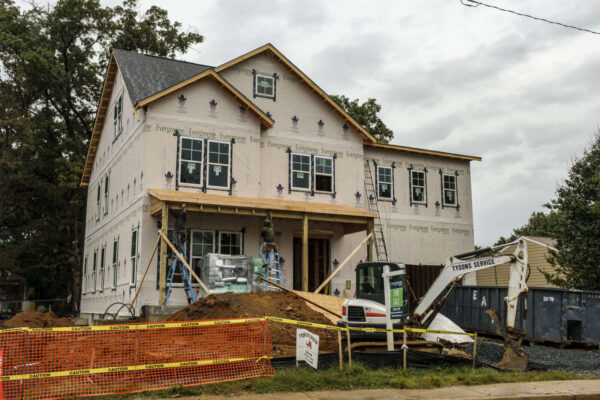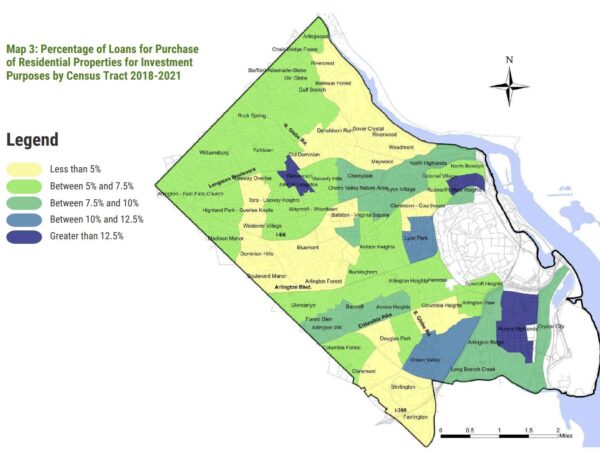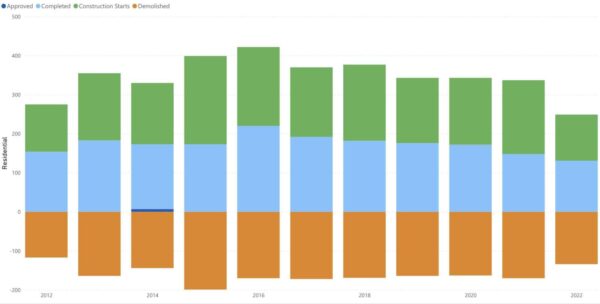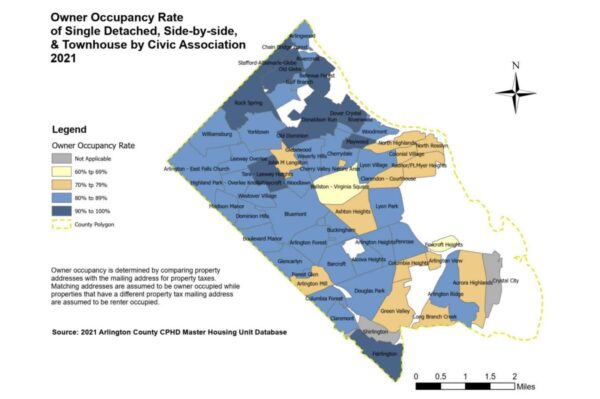
In Green Valley, resident Portia Clark says she and her neighbors are bombarded with calls and letters from realtors and potential investors about buying their homes.
“We were once a very stable community of homeowners who bought our homes to live here and pay them off,” she said. That increasingly seems to be changing.
There, as in Halls Hill — also known as High View Park — homes are being changing hands as the older generation passes away and their inheritors decide to sell. Some want to buy in more affordable areas, while others cannot afford to make necessary repairs or take over the mortgages, she said.
“At one time, we were the last affordable neighborhood in Arlington to buy a house in,” said Clark, president of the Green Valley Civic Association. “Investors are buying affordable homes, to tear them down and rebuild or have been building townhomes, condos or homes they are renting out.”
Green Valley and Halls Hill — both historically Black communities — are among a handful of Arlington neighborhoods with higher investment rates, according to a home ownership report published by the county in October. The report analyzed home-ownership market trends and barriers to buying.
The county report looked at the number of home loans for investors versus the total loans lent out for every census tract in Arlington. Pentagon City and Aurora Highlands, Radnor-Fort Myer Heights and Halls Hill had investment rates exceeding 12.5%. Investor purchases made up between 10% and 12.5% of financed purchases in Green Valley and Lyon Park, while other neighborhoods had lower rates of investor interest.

Neighborhoods like Clark’s are have lower owner-occupancy rates and higher rates of property purchased for investment purposes, but overall 86% of Arlingtonians in single-family homes are owners, according to Erika Moore, a spokeswoman for the Dept. of Community Planning, Housing and Development.
Reasons for higher investment rates vary by neighborhood, per the report. The county attributes investment in Pentagon City and Aurora Highlands to Amazon’s HQ2, and investment in Radnor-Fort Myer Heights to interest in the River Place co-op, where an expiring ground lease makes properties more attractive to investors than to individual homebuyers.
When asked if staff had any guesses as to why Halls Hill, Green Valley and Lyon Park attracted more investors, Moore said the data staff collected was unclear.
Realtor Eli Tucker says these neighborhoods all have “pockets” of less expensive properties, typically multifamily homes, and many of the investors in Arlington are builders. That tracks with Arlington’s consistent rate of homes torn down, rebuilt and sold at a premium.

In Halls Hill, Green Valley and Lyon Park, the less expensive options include apartments and smaller duplex and townhouse properties, which often have no or low HOA fees. These neighborhoods also attract renters.
“[These] are very good rental locations and properties, but tend to be passed over more by principal buyers,” he said. “They can generate higher return-on-investment for investors than many other locations and property types that generate a lot more competition from principal buyers.”

As for River Place, Tucker says it attracts investors whereas most cooperatives tend to restrict investors looking for rental income. The ground lease set to expire in 2052 creates two investor-friendly conditions.
First, the timeline means fewer mortgage options, which means buyers must pay with cash, which favors investors. Second, it means unit values are going down, instead of up.
“For most principal buyers, this makes it a terribly unappealing asset to own,” he said. “For investors, however, they are simply looking at the present value of the expected future cash flow generated by the unit and so long as they can acquire the property at a price that results in a high enough return based on that calculation, it’s a win.”
Arlington’s high property values, as well as its relative lack of fixer-uppers and expansive developments, detract two typical investors, according to Tucker — home-flippers and investment groups.
“Many of the homes that are in investor condition are small and require adding square footage (very expensive) and/or major reconfiguration (expensive), which makes profitability difficult,” he said. “As a result, a lot of our investors are builders.”
Meanwhile, Arlington’s diverse housing stock is hard to value from a distance. Investment groups and corporations prefer “expansive tracts of similar homes that allow for predictable and consistent market valuations,” he said.
One change to Arlington’s housing market that could attract more investors is Missing Middle, he says. This set of controversial zoning ordinance amendments would allow low-density multifamily buildings in what are currently exclusively single-family neighborhoods.
“Those investors love the idea of building 4-8 units and renting them long-term in a stable real estate market,” Tucker said.
On Monday, Dec. 12 at 7 p.m., the Planning Commission is slated to hear a request to advertise public hearings for the Planning Commission and the Arlington County Board on the Missing Middle proposal. The County Board is expected to hear the advertisement request no earlier than January 2023.

